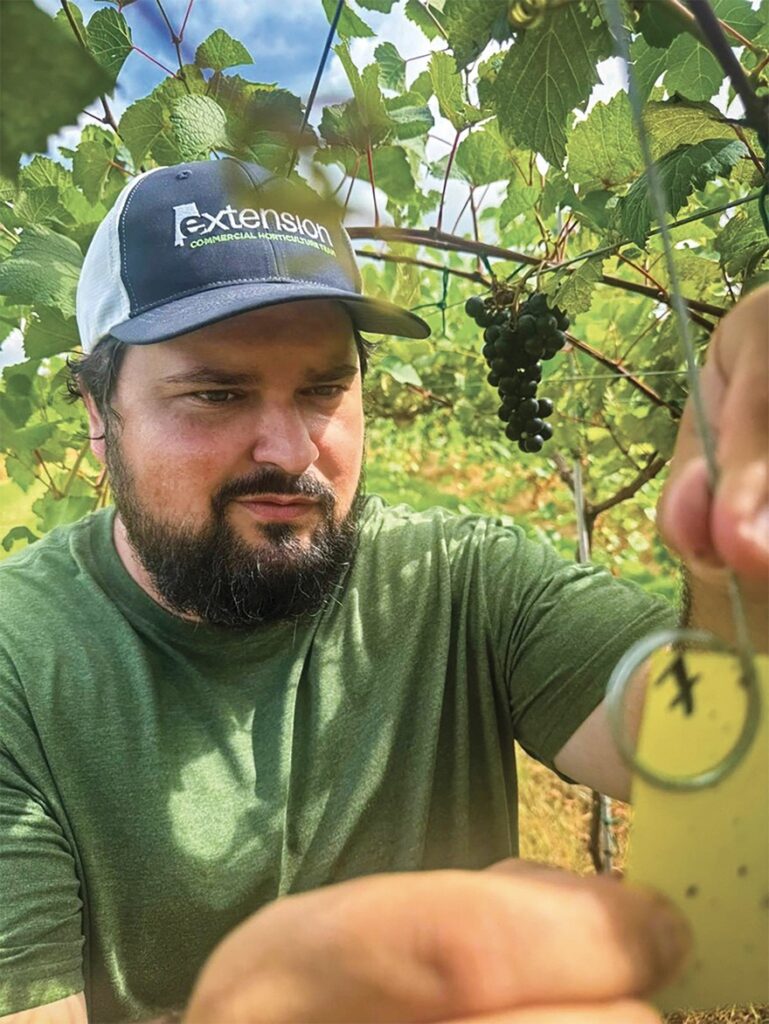
Paulo Cremonez joined Auburn University in July 2024 as an Assistant Professor and Extension Specialist in Vegetable and Fruit Entomology. His current focus includes addressing the immediate and long-term pest management needs of vegetable growers, from large-scale farmers to home gardeners.
About Me
My background is rooted in vegetable pest management, where I have worked on Integrated Pest Management (IPM), insecticide resistance management (IRM), and the effects of pesticides on insect mortality, development, and behavior. Since arriving in Alabama, I have focused on addressing the immediate and long-term pest management needs of vegetable growers, from large-scale farmers to home gardeners, while also laying the groundwork to expand my efforts into small fruit production.
Though I am new to fruit crop research, I see a valuable opportunity to apply my hands-on experience in vegetable systems to fruit pest management, especially in areas such as insect monitoring, IPM adoption, and applied field trials. My goal is to help fruit growers tackle current pest challenges through updated, research-based strategies that are grounded in practical production systems.
As part of this expansion, one of my first experiences in fruit pest management has been partnering with colleagues to set up insect monitoring tools to study sharpshooter leafhopper activity in grapes and blueberries. These insects, such as the glassy-winged sharpshooter and the broad-headed sharpshooter, are key vectors of Xylella fastidiosa, the bacterium responsible for Pierce’s disease in grapes, bacterial leaf scorch in blueberries, and phony peach disease in peaches. These diseases can lead to significant yield loss and long-term vine or plant decline. Although not yet widespread in Alabama fruit systems, the presence of sharpshooter vectors and favorable conditions poses a potential risk. By collecting early-season and peak-activity data, our goal is to better understand vector dynamics and generate baseline information that can support future management decisions, particularly in the context of disease prevention strategies (Figure 1).

I am also interested in helping establish a proactive monitoring network for the spotted lanternfly (SLF, Lycorma delicatula), an invasive pest that poses a growing threat to fruit production. While it has not yet been reported in Alabama as of spring 2025, SLF has already been found in neighboring Georgia and Tennessee, with the southernmost detection in the metro Atlanta area. This highlights the risk of spread into Alabama, particularly in the northeastern region along the Tennessee Valley and I-59 corridor, where traffic flow and the presence of host plants could facilitate introduction. Vineyards and muscadine production in these areas may be especially vulnerable. Engaging Extension agents, home gardeners, and concerned citizens in a coordinated monitoring effort will be key to early detection and protecting our fruit crops. For more information, check out this comprehensive Extension report on the Spotted Lanternfly.
While my current experience lies primarily in vegetable systems, I am excited to expand my applied research and Extension work to support fruit production in Alabama. I aim to build a program that not only addresses key pest issues in small fruits but also contributes to the development of practical, science-based solutions that growers can use in the field. Part of this involves incorporating updated and state-of-the-art technologies to improve pest management in specialty crops, such as the use of precision agriculture tools. I look forward to collaborating with Extension professionals, industry members, and growers as I continue learning from the fruit-growing community. I am eager for the opportunity to give back through research, outreach, and service.